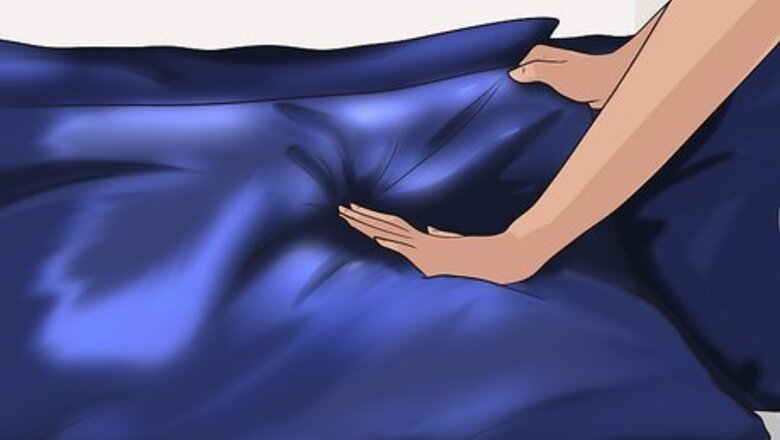
views
Switch to a satin or silk pillowcase.
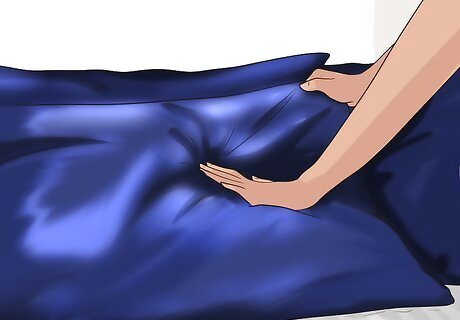
Smooth fabrics create less friction (and less frizzing). When you move your head around on a cotton pillowcase, the friction speeds up the breakdown of the restructuring process created by your perm. You’ll wake up with frizzier hair and end up with a perm that doesn’t last as long. Instead, sleep on a satin or silk pillowcase that creates far less friction. While they look and feel more luxurious, silk and especially satin pillowcases aren’t that much more expensive than high-quality cotton pillowcases.
Wrap your perm in a satin or silk scarf.
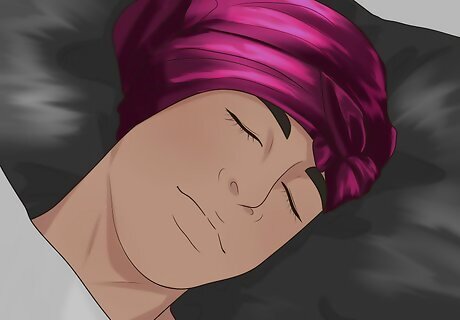
The scarf reduces frizz and keeps your hair from getting squashed. A silk or satin scarf cuts down on frizz-casuing friction while you sleep. It also prevents your permed hair from getting squeezed between your head and the pillow. Simply gather your hair up toward the top of your head (if you have longer hair), loosely wrap the scarf around your head a few times, and tie off the ends. To really reduce friction, use both a silk/satin scarf and a silk/satin pillowcase!
Wear a satin sleep bonnet.
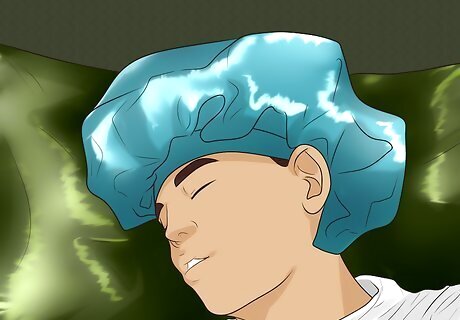
The bonnet works like a scarf wrap but is even easier to use. Yes, satin sleep bonnet ads are usually targeted toward women, but they definitely work just as well for guys. Just slip the satin sleep bonnet over your head and cinch it up to hold it in place. The bonnet keeps you hair out of harm’s way both from friction and from getting squashed while you sleep. If you have longer hair, bunch it up over your head first and, if needed, loosely secure it with a satin scrunchie.
Use a microfiber towel as a less-ideal option.
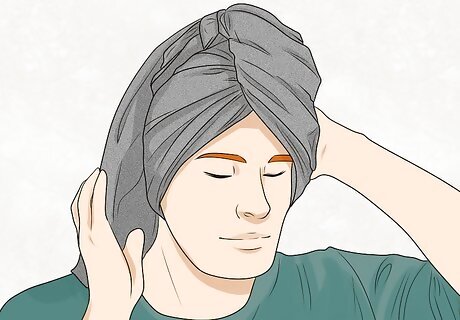
Microfiber reduces friction but also soaks up moisture. A good microfiber towel, wrapped on like a turban, will create less friction on your perm than a cotton towel or pillowcase. But, unlike satin or silk, it will really soak up moisture from your permed hair, which can cause frizzing and a shorter-lasting perm. To counteract the moisture-soaking effects of the microfiber towel, apply some leave-in conditioner to your hands and gently scrunch your hair to distribute the conditioner.
Gather longer hair into a “pineapple” to protect it.
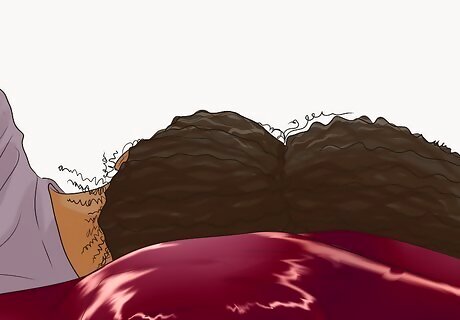
Secure your hair on top of your head so you don’t squash it. The “pineapple” hairdo is a classic way to care for permed hair at night. Start by gathering your hair on top of your head between your crown and forehead—this may be easier to do if you bend over completely. Then secure the hair in place with a loose satin scrunchie or a satin scarf that you wrap loosely at the base of the gathered hair. Wrap your hair as loosely as you can while still keeping it in place. This will limit damage to your perm in the area where you use the scrunchie or scarf. This technique works great in combination with other perm-protecting options like using a sleep bonnet.
Sleep on your side or stomach.
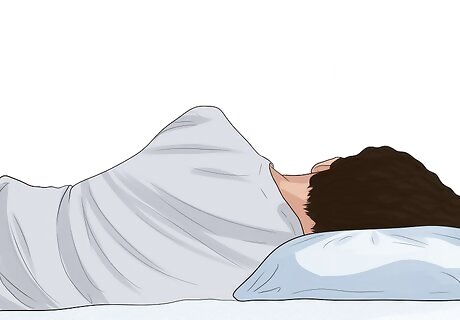
These positions help keep your perm out of harm’s way. Especially if you pull your hair up and/or wrap it, sleeping on your side or stomach limits how much of your perm ends up squashed between your head and pillow. Sleeping on your back, however, always ends up flattening some of the back of your hair no matter what measures you take.
Let your hair dry completely before bedtime.
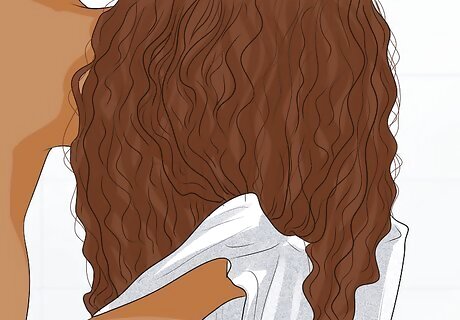
Damp hair is more likely to end up flattened or tangled in the morning. Going to bed with damp hair isn’t a good idea with any hairstyle, but especially so with a perm. Air drying is the best option for permed hair, or you can pat it dry with a microfiber towel. If you have to use a blow dryer, add a diffuser and put it on a low heat setting.
Scrunch your curls lightly when you wake up.
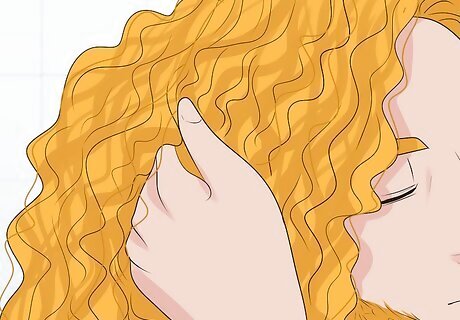
Touch up any minor overnight perm frizzing or squashing. Your perm may look a bit out-of-sorts come morning even if you take preventative measures—but you can fix that! Simply run some water on your hands or lightly mist the affected areas with water. Then use your fingertips to lightly scrunch your perm curls or waves back into shape.
Wash your hair no more than 1-2 times weekly.
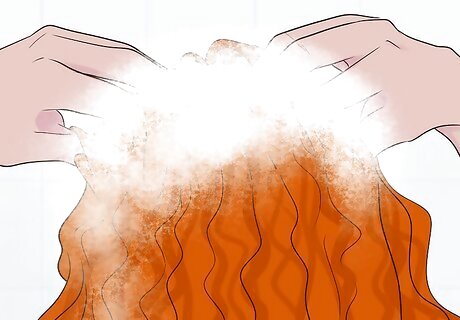
Over-washed, fragile hair is more susceptible to overnight damage. Permed hair gets dry and damaged more easily, and shampooing strips even more moisture away, even if you use conditioner. To help maintain your perm and the health of your hair, aim to wash it only once—or maybe twice—per week. The stylist who does your perm will probably tell you not to wash your hair (or even get it wet) for at least 3 days afterward. This gives the perm treatment time to fully set, so follow these instructions carefully. If your hair needs a cleaning between washings, use a dry shampoo.
Use conditioner every day.
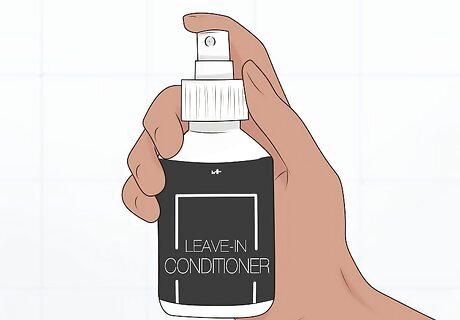
Apply a leave-in conditioner on days you don’t wash your hair. For the easiest application option, use a spray conditioner, add some to your hands, and lightly scrunch your curls with your fingers. On the days when you do wash your hair, use a deep conditioner to lock in as much moisture as possible. Ask your stylist for conditioner recommendations.
Massage in a curl cream or hair serum.
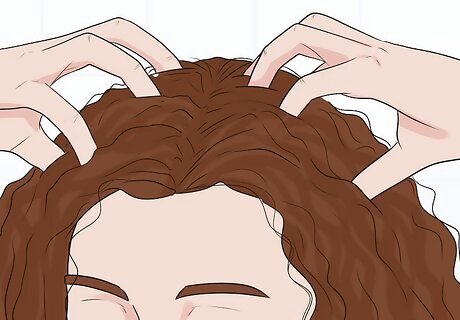
Apply these treatments with a light touch when your hair is damp. On evenings when you do wash your hair, wait until it’s slightly damp and then lightly massage in either a curl cream or a protein-rich hair serum. Let your hair dry the rest of the way and wrap or loosely tie it up before bedtime. The massage should really be more of a patting motion with your fingers to reduce the disruption to your perm.
De-tangle with a wide-tooth comb or fingertips.
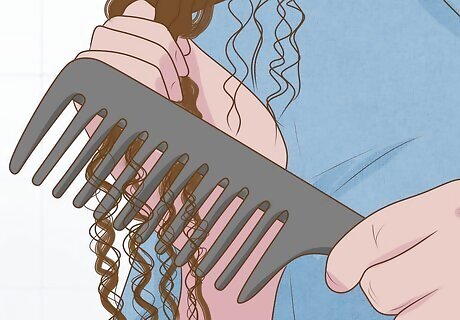
Avoid brushing permed hair or running your fingers through it. When you develop a few tangles in your perm, run the widely-spaced teeth of the comb (or your spread fingertips) through the area with short, quick strokes. Basically, do as little as is necessary to work out each tangle. Running the tines of a regular comb or brush through your hair will break down the shape and structure of your perm more quickly. Simply running your entire fingers through permed hair will, over time, break it down as well.
Get a trim every 2-3 weeks.
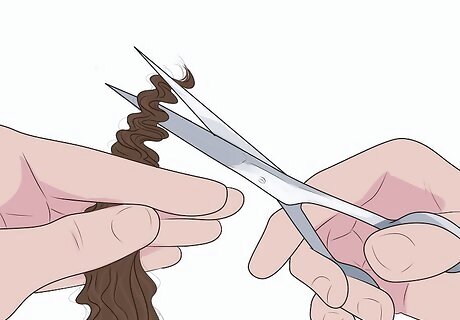
Clean up new split ends to keep your perm looking its best. As your hair starts to grow out and the perm starts to break down, split ends will inevitably begin to form. Head to the barber shop or salon to deal with this every 2-3 weeks (or as needed). Snipping off any split ends will help keep your perm looking fresh and clean. You can try giving yourself a trim, but your perm is probably safest in the hands of a pro!




















Comments
0 comment